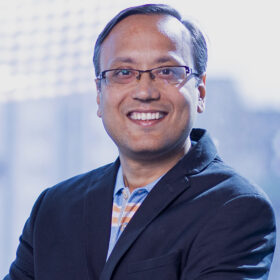The skills gap, not capital, is India’s real green energy bottleneck
The renewable energy sector creates significant employment density—approximately 10 times more workers per MW in solar and 3–4 times more in wind than in conventional power plants. This employment multiplication should be our competitive advantage. However, the skills gap is creating economic inefficiencies that compound across the sector.
The sustainability advantage: Why HJT’s low-temperature manufacturing process matters?
As adoption accelerates, the critical question is no longer simply how much solar capacity can be installed, but how clean and sustainable the manufacturing process behind it truly is. Heterojunction Technology (HJT) has become one of the most compelling answers to that challenge.
From waste to wealth: Circular strategies driving a sustainable India
The promise of India’s circular economy lies in its ability to turn environmental challenges into engines of growth. Achieving it will take investment, innovation, and clear ways to measure progress.
Keeping the smart grid cyber secure
As smart grid tech is rolled out around the world to modernize legacy assets and integrate renewable energy generation, it is also making the electricity network more prone to cyber attacks. IEC Standards provide protection but they also are challenged to keep up with the latest threats.
OPIS Global Polysilicon Marker holds firm as trade barriers continue driving fragmentation
In a new weekly update for pv magazine, OPIS, a Dow Jones company, provides a quick look at the main price trends in the global PV industry.
India’s green hydrogen future needs demand to keep pace with ambition
If India solves demand creation intelligently, it can become a global price-setter, not just another participant in the hydrogen economy.
Integrating solar and storage for industrial users: Lessons from early projects in Gujarat
Gujarat’s leadership in renewable deployment is now extending into the field of solar plus storage, with direct implications for industrial power users. Large grid connected projects in Kutch, storage additions at hybrid sites, and new battery initiatives aimed at supplying industries with on-demand renewable energy are all early examples of how solar and storage can work together in practice.
Strengthening India’s energy security through alternative fuels and hydrogen
India’s energy transition is not about a single breakthrough but about steady steps across multiple fronts. Ethanol has shown how supportive policy and the right technologies can deliver both farmer security and fuel stability. BioCNG can turn waste into a resource, helping both cities and villages. Hydrogen, though still in its early stages, is slowly laying the foundations of a long-term clean energy system.
U.S. extends solar manufacturing tariff exclusions
The U.S. Trade Representative has extended the exclusion of 178 items from the Section 301 import tariffs that were put in place by the prior administration in 2024. The still standing tariffs include a 50% increase on solar cells.
Are solar PV developers in India prepared for increasingly severe monsoons?
India witnessed above-average precipitation and prolonged cloud cover through July and August, limiting the potential of PV generation across many states. Several regions, including Punjab, Haryana, and the Himalayan foothills, were hit hardest by flooding and thunderstorms. The increase in atmospheric moisture and aerosol scattering led to reduced Global Horizontal Irradiation (GHI) and reduced energy output.















